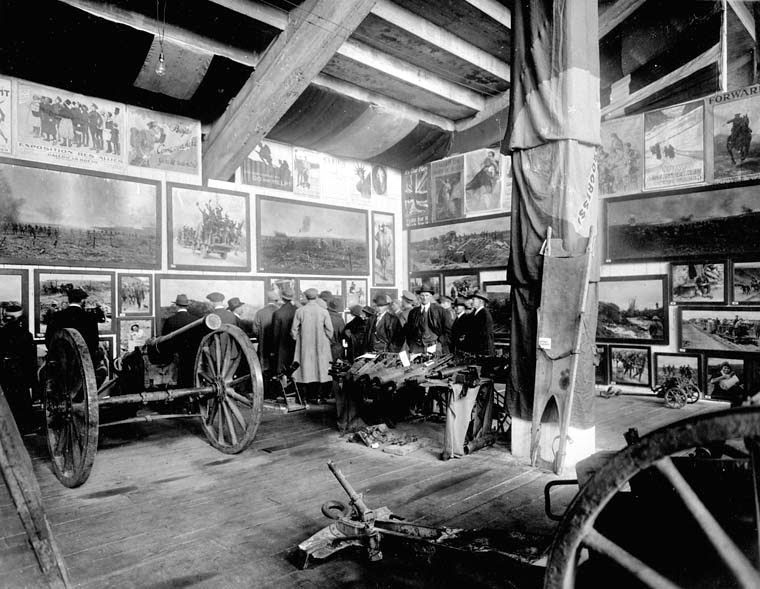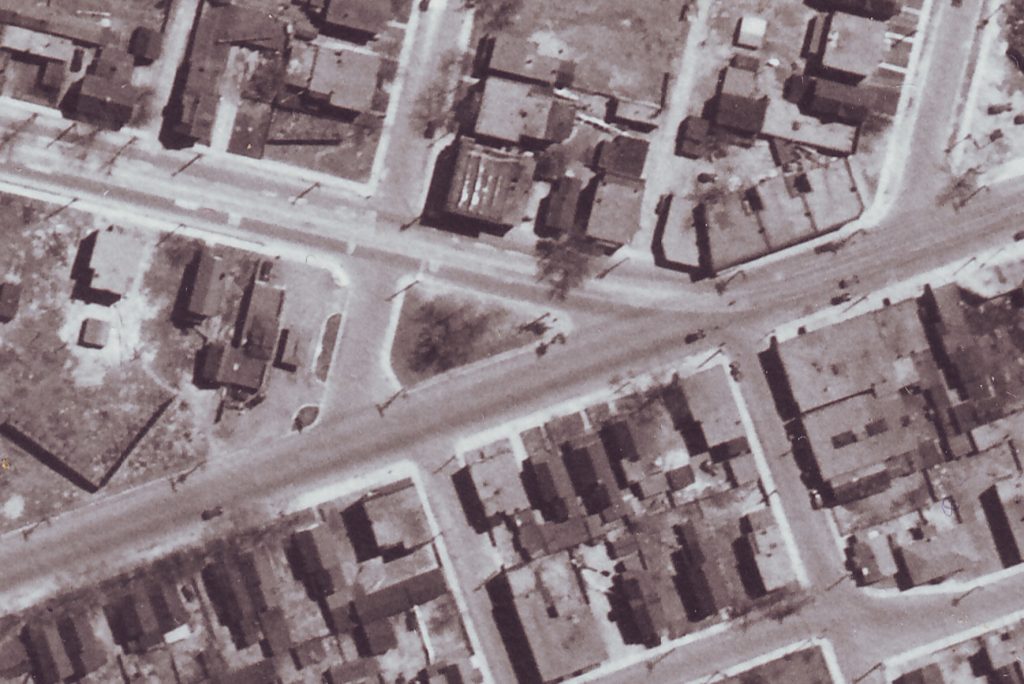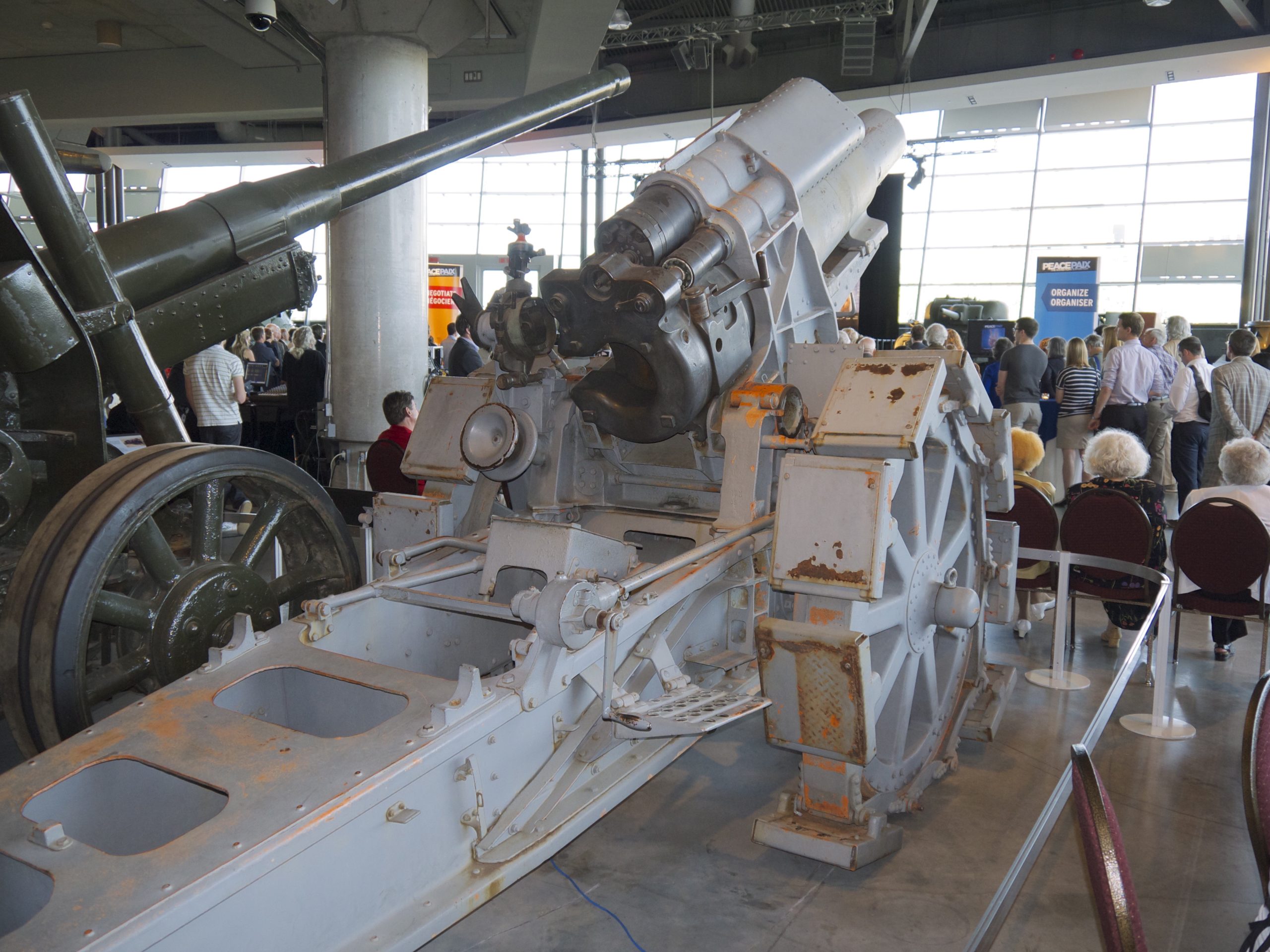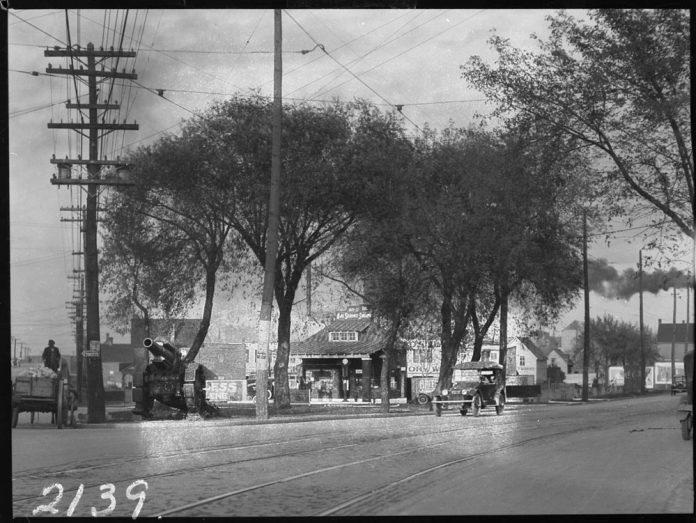By Dave Allston
Somerset Square is in the heart of Hintonburg, a landmark meeting point where Wellington curves into Somerset Street. Today the popular community space is filled with trees, benches, local artwork and a cozy fountain.
In the 1920s and 1930s, a 19,040-pound howitzer gun – a “war trophy” Canada brought home from Germany after the First World War – occupied the space instead.
After the First World War, many Hintonburg churches and other institutions dedicated memorials in their halls to parishioners lost during the war. There was no central monument within the village. Like many small towns across Canada, Hintonburg featured a different kind of visual memorial: a piece of actual battle equipment captured by the Canadian forces and brought back home for display. There were around 4,400 such trophies around the country.
The items were collected in England and France in early 1919. Dominion Archivist Dr. Arthur Doughty visited the items and arranged for their gradual transportation aboard steamers bound for Canada. He laid out plans for a grand museum that would house all of the war trophies, art and other artefacts.
A temporary space was eventually secured in a small building next to the Dominion Archives building on Sussex Drive, but the plans were never realized. Instead, the Archives sent these trophies by train to municipalities, schools and military units who wanted to display them as local memorials in parks or important buildings.
The artefacts were first displayed as part of a popular exhibit at the Central Canada Exhibition in Sept. 1919. The exhibition featured a huge arrangement of airplanes, a 22’ long German submarine periscope, 12’ aerial bombs, torpedoes, an armoured car, captured German flags, German gas helmets, machine guns, photographs and signs from battleground trenches. This all sat under the Lansdowne Park grandstand, capturing the attention of the many visitors. A travelling roadshow of trophies also later became an Armistice Day tradition in many big Canadian cities.

Several years ago, a photograph was discovered in the holdings of Library and Archives Canada showing a howitzer gun pointing down Wellington Street. Hintonburg historian Paulette Dozois wrote about this “Hintonburg Howitzer,” finding that little was known about where it had come from, and just as interestingly, where it disappeared to.
With help from Alex Comber, a historian dedicated to tracking down Canada’s original war trophies, I discovered more about the Hintonburg Howitzer.
Records show that the howitzer was captured by the 2nd Battalion (Eastern Ontario Regiment), an infantry battalion of the Canadian Army. The 2nd Battalion fought at many important battles including Ypres, Festubert, Vimy, Passchendaele and Canal du Nord, among others. By the end of the war, 242 officers and 5,084 other ranks had fought with the battalion. Of those, 52 officers and 1,227 other ranks died of injuries, were killed in action or were killed accidentally.
The Hintonburg Howitzer was likely acquired along Canal du Nord in France during the final battles of “Canada’s Hundred Days,” the final hundred days of the First World War. Canada helped break the German army’s final defensive positions, leaving the Germans in full retreat and bringing the war to an end. The heroic 2nd Battalion returned to Canada on April 21, 1919.
The first shipment of war trophies bound for Ottawa arrived at Lansdowne Park in April 1920 containing five train carloads with mostly 4-1 howitzers. The War Trophies Commission was responsible for co-ordinating the delivery to the various museums of places of exhibition.
Hintonburg’s German heavy howitzer was a 21 cm Mörser (mortar) gun, of 1916 pattern. It had the serial number 1805. This was one of the most important types of heavy artillery used by the Germans because it could supposedly destroy trenches and dugouts up to 9,400 meters away. It also featured steel “shoes” on its wheels that helped it cross rough and muddy terrain.
The Hintonburg Howitzer briefly sat on the exhibition grounds at Lansdowne before the village acquired it for display. It was likely installed at Somerset Square in the mid-1920s, where it proudly stood for around a decade and a half.
By May 1934, the Hintonburg Howitzer was apparently in the way of progress. The Civic Traffic Committee was considering the installation of traffic lights at two intersections: the corners of Preston and Somerset, and Wellington and Somerset.
Alderman W.H. Marsden filed a report with the Board of Control stating that the gun had become a menace and was “merely an attraction for boys.” The Traffic Committee wanted to round off Somerset Square and install the lights. It was proposed the old howitzer be taken and disposed of at the city dump on Bayview Road.
In late July, the Traffic Committee asked the Industrial and Publicity Committee if they were interested in the howitzer for the tourist campground at Lansdowne Park. The Publicity Committee politely declined the offer, since the campground already featured a German gun.
In an editorial titled “Who wants a big gun?” the Ottawa Journal wrote: “They were tangible demonstrations of a great victory. Now they are ugly masses of rusty iron less useful than almost anything else in the world, less ornamental than a tree, of not much interest to anyone.”
The editorial singled out “one of these great hideous guns” at the corner of Wellington and Somerset, suggesting it “might as well be dumped in a deep hole in the river.” Apparently, First World War victory pride had waned.

On Aug. 9, the Board of Control agreed to remove the gun and approved the $10 expenditure (around $210 today) to transport it to Bayview yard.
Shortly before it was moved, the gun had one final highlight. On the afternoon of Aug. 25, 1934, two Toronto men caught committing cheque fraud fled a Sparks Street business. During their escape, the pair stuffed 68 forged cheques into the muzzle of the Somerset Square gun. The cheques were found by local children and handed over to police.
The howitzer was soon moved, and traffic lights were installed that fall at Wellington and Somerset.
In May 1936, Dominion Archivist J.F. Kenney wrote a concerned letter to City Council about the condition of six war trophies given to the City of Ottawa. He noted that the Hintonburg Howitzer was sitting on “muddy soil north of the C.P.R. roundhouse,” sinking into the ground, and in rusty condition with dry rot set into the wooden parts. The muzzle was full of trash, including old wood, paper and cigarette butts.
The archivist was upset at the condition of this and the five other guns, and wanted to retake ownership to move it to a more appreciative municipality. The City voted to spend $85 (around $1,750 today) to repair four guns at Lansdowne Park, and to return the former Hintonburg gun to the Archives.
From there, evidence indicates that the gun was moved to the Archives on Sussex Drive. Alex Comber suggests, “it would have been kept on the river side of the original (Dominion Archives) building, or possibly closer to the Royal Canadian Mint building.”
In Oct. 1940, Mayor Stanley Lewis set off controversy when he agreed to donate several First World War trophies still on display to the local Boy Scouts as part of their scrap metal campaign. The Dominion Archives stepped in, pointing out the guns were still the federal government’s property and would be repurposed if the City did not wish to maintain them further.
Shortly after, the federal government enacted a similar plan, melting down old war trophies to make new weapons for the Second World War.
Deputy Minister of the Public Archives Lanctot wrote: “The present war has created a new condition, and a great many people are anxious to return these guns to Germany in a way that it is hoped will help our cause, and believe that to turn these guns over as scrap metal is the best way to achieve this purpose.”
By 1942, it was reported that 343 heavy howitzers and field guns, 110 trench mortars and 262 machine guns from the First World War had gone back to Europe in the form of bombs, shells and bullets.
Records indicate the Hintonburg Howitzer met this fate sometime in 1941, a decision that forever melted away part of the community’s wartime history.

